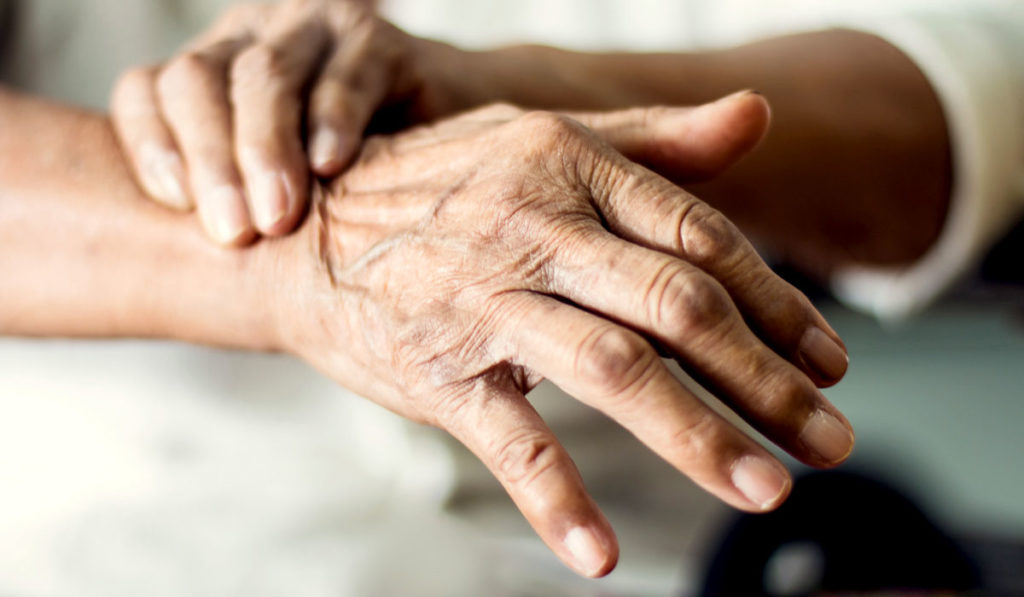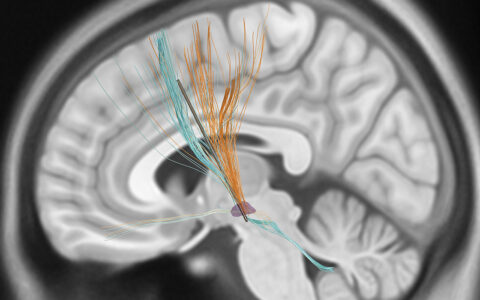Many patients and caregivers in long-term care facilities (LTCs) wrestle with the impaired function and discomfort caused by spasticity, yet a large proportion is likely not being diagnosed or treated. With continued improvements in life-saving measures for stroke, traumatic brain injury and spinal cord injury, spasticity prevalence in LTCs (currently 21-35 percent) could trend upward in tandem, heightening the unmet need.
Mallory Hacker, Ph.D., assistant professor of neurology at Vanderbilt University Medical Center, and Vanderbilt students Miranda Tomaras and Jacqueline Meystedt recently completed three spasticity studies that illuminate areas for improvement in current care. They presented their findings at the American Neurology Association Annual Meeting in October 2019.
The three studies examine the impact spasticity has on self-care, the potential design for a bedside screening tool, and spasticity connection with urinary incontinence (UI). Hacker says this line of research could have a significant impact. “We know that existing spasticity treatments such as oral medications, physical and occupational therapy, neurotoxin injections, and intrathecal baclofen therapy are associated with functional improvement and better quality of life,” she said.
A Trio of Studies
In one study, Meystedt reports a high association between spasticity, particularly in lower limbs, and dependency in activities of daily living in the majority (209/219) of residents of a facility that provides both acute and long-term care. The study also found that while 21 percent of residents had spasticity, only 11 percent of those with the condition were previously diagnosed and receiving treatment.
With this diagnostic deficit in mind, Hacker worked with David Charles, M.D., professor and vice-chair of neurology at Vanderbilt, to develop and test a three-minute bedside screening tool for spasticity. The tool is a simple, one-page flowchart with three “yes or no” questions, guiding a brief physical examination, to look for signs of spasticity and determine whether the patient should be referred for further evaluation.
A primary care provider previously unfamiliar with the bedside tool then tested it in 43 residents of an LTC. The tool had 92 percent sensitivity and 78 percent specificity. “A validation study is needed, but these initial findings suggest that using this bedside tool could help many people with spasticity get referred for evaluation,” Hacker said.
“These initial findings suggest that using this bedside tool could help many people with spasticity get referred for evaluation.”
In a third study, Tomaras evaluated the comorbid prevalence of spasticity and UI in a group of 49 LTC residents. UI was more common in patients with spasticity (82 percent) than those without (69 percent). Patients with both conditions present had significantly greater dependence in activities of daily living and worse quality of life.
Reducing the Burden of Care
Around 1.4 million people have spasticity associated with stroke. Second to stroke, the most common cause in older adults is fall-related traumatic injury to the spinal cord and brain. With traumatic spinal cord injury alone, up to 68 percent of the 259,000 people living with the aftermath suffer from spasticity. Yet symptoms appear on a variable timeline, confounding diagnosis.
“An extrapolation of our studies is that a significant portion of these patients are not diagnosed and thus, unfortunately, not receiving available treatments. This can be a function of multiple comorbidities that cloud the picture, Hacker said. “The impetus for our bedside screening tool was to develop a quick, easy-to-implement means of screening for spasticity in LTC residents with a broad range of disease states.”
Improved screening could help more LTC residents affected by spasticity access effective therapies that range from medications to assistive devices.
Charles added, “Most importantly, there must be updates to healthcare policy, including the Minimum Data Set published by the Centers for Medicaid and Medicare Services to ensure that residents in LTCs are properly diagnosed and then have access to approved therapies for spasticity.”






